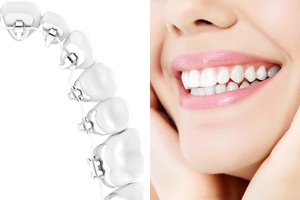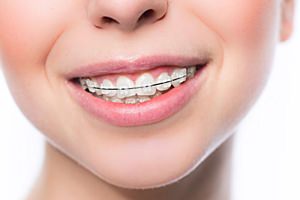TREATMENT OF ADULTS
A beautiful smile only looks really radiant with healthy teeth. Crooked teeth in the center of the face are difficult to hide, affected persons know that too well!
Our greatest motivation for over 20 years: The brilliant smile of our patients after successful treatment! A perfect result for the doctor, but a big part of quality of life for each of our patients. With in-depth specialist knowledge and long-term of experience we offer the most modern techniques according to the latest findings in orthodontics.
Modern orthodontics has two goals: On the one hand, good chewing function is important for keeping the teeth and the entire organism healthy. Because being able to eat with your own teeth even in old age is pure enjoyment. On the other hand, we strive for a harmonious appearance with a beautiful and healthy smile. These two goals are inseparably linked. A beautiful smile is not possible without a good bite function and vice versa. In this way, the requirements of contemporary medicine and the desire for quality of life and beauty complete each other.
It's not a question of age
In the past was orthodontic treatment primarily associated with children and adolescents.…
… Adults make today a large part of our patient population. We are therefore aware of the desire for invisible treatment that has little impact on the daily life of the patient. Modern orthodontics with invisible, internal braces, the Invisalign technique or aesthetic ceramic brackets offer a number of options for pleasant treatment. Ultimately, your wishes and the medical requirements are decisive for the type of treatment.
Cunsultation + diagnostics
During our consultation, we examine your teeth as well as the position of the jaws. In this way we can give an assessment of the treatment options. …
…The preparation of diagnostic documents is a condition for individual treatment planning. Photos, impressions and X-rays are made, using the most modern imaging processes (digital X-ray technology) with minimal radiation exposure. We attach great importance to a careful weighing of benefits and costs and to clarification of costs and risks.
Therapy
Depending on the tooth and jaw misalignment and the goal of the treatment, different treatment agents are used. …
…Your wishes and medical needs determine the choice of treatment option. Invisible or inconspicuous treatment agents that integrate well into your everyday life are the means of our choice. How long the therapy lasts and the amount of effort involved depends on the degree of the misalignment and the means used. Smaller corrections can be carried out faster, larger corrections take longer.
Therapeutic options
Invisalign:

With the Invisalign method, misaligned teeth are treated with a series of individually manufactured and therefore very comfortable aligners. These removable splints are almost invisible in the mouth. The aligners are changed every 2 weeks. Gradually the teeth move into the pre-calculated end position. Transparent, removable and comfortable - Invisalign creates an aesthetic and functional improvement with almost no restrictions in everyday life. Over 3 million people around the world have already discovered these benefits for themselves. Almost 1,000 of them in our office.
The lingual technique:

With the lingual technique, the fixed braces are attached to the inside of the teeth. The teeth are moved in the same way as with conventional fixed appliances on the outside of the teeth.Through the positioning on the inside of the teeth, the braces are almost invisible. With the innovative Incognito and WIN concepts - our office is certified for both techniques - the teeth are moved into the defined position using individually prefabricated treatment archwires. A flat profile of the braces used ensures the least possible restriction of comfort in the oral cavity.
Conventional appliance:

Conventional fixed appliances have developed positively over the past few years. The improvement of the ceramic materials allows an unremarkable therapy in adolescents and adults, even with fixed braces attached to the outer surfaces of the teeth. The use of individual archwires ensures the achievement of defined treatment goal. Because the outer radius of the dental arch is larger than the inner radius, the same kinetic energy can be transmitted to the dental arches with lower forces than with the lingual technique. The aesthetic disadvantage of conventional fixed therapy is compensated by the use of gentle forces.



